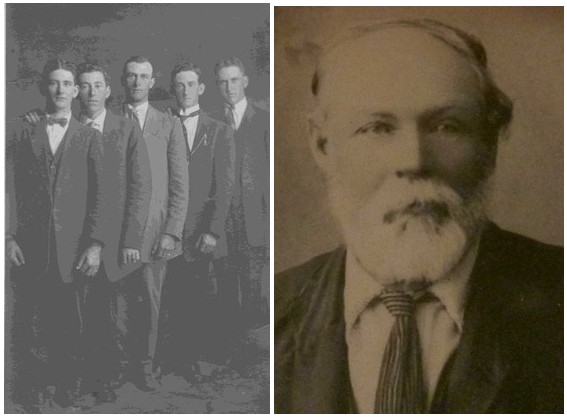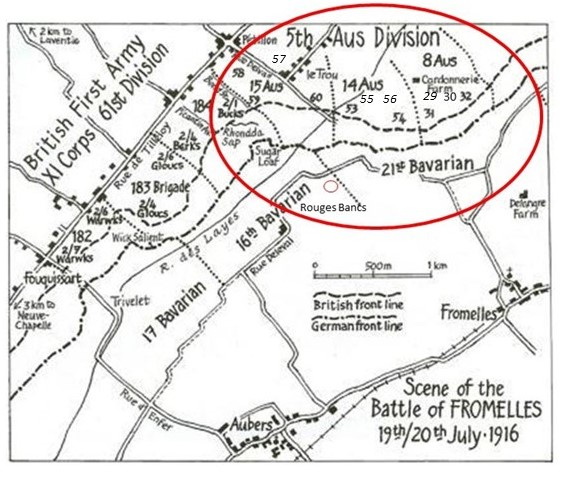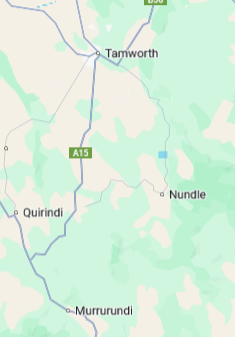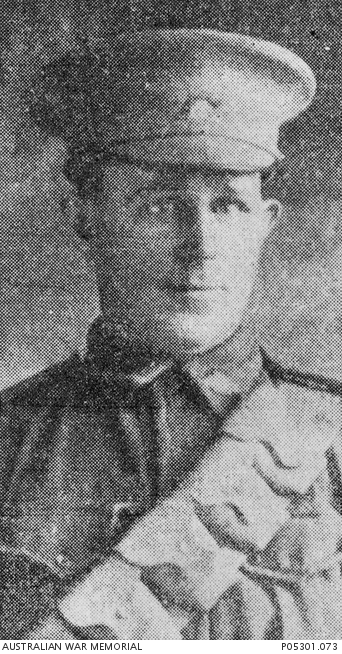
John William NICHOLL
Eyes blue, Hair brown, Complexion florid
John William Nicholl – “A husband remembered, a brother mourned”
Can you help find Jack?
John William Nicholl, known as Jack, was killed in action at Fromelles on 19th July 1916. As part of the 53rd Battalion, he was positioned near where the Germans collected soldiers who were later buried at Pheasant Wood. Family have come forward to assist.
In 2008 a mass grave was found at Fromelles, a grave the Germans dug for 250 (Australian) bodies they recovered after the battle. As of 2024, DNA matching from relatives has enabled the identification of 180 of these soldiers.
See the DNA box at the end of the story for what we do know about his family.
Please contact the Fromelles Association of Australia to find out more.
Early Life
John William Nicholl, known as Jack, was born on 1 April 1880 at Yarraman, near Quirindi, New South Wales. He was the eldest son of William Nicholl (Jr) 1850-1925 from Maitland and Sarah Jane Nicholl (née McCluskey) 1857-1935 of Murrurundi. They married in Murrurundi in 1876.
Jack grew up as one of 14 children of which 10 survived to adulthood:
- Margaret Jane (Maggie) (1876–1920)
- William Albert 1 (Willie) (1876–1884) – died in childhood*
- Minnie Selina (1878–1884) – died in childhood*
- John William (Jack) (1880–1916) – KIA Fromelles, married Rachel White
- Thomas Robert (1882–1953)
- Herbert Anglesey Australia (1884–1906) – died young*
- Arthur Richard (Dick) (1886–1917) – AIF, died of wounds Egypt
- Percy (Perc) (1888–1952) – AIF, married Elvina Carr
- Pearl Selina (Queenie) (1890–1975)
- Maud Mary (Mary) (1892–1968)
- Nina Violet (1894–1895) – died in infancy*
- Elsie Eva (Eva) (1896–1956)
- William Albert 2 (Willie) (1898–1961) – AIF, married Gertrude Lock
- Claude (1902–1906) – died in childhood*

The Nicholl family were well known in the district, with their father working as a butcher and cattle dealer. Like his brothers, Jack likely helped with droving and farm work as a boy and was part of the close-knit family known for their involvement in rugby union and community activities.
Four of their sons would eventually enlist in the war:
- Private John William (Jack) Nicholl, 53rd Battalion (1880–1916) – killed in action at Fromelles, France.
- Private Arthur Richard (Dick) Nicholl, 1st Light Horse Regiment (1886–1917) – died of wounds in Egypt after serving at Gallipoli and in the Sinai campaign.
- Private Percy (Perce) Nicholl, 6th Light Horse Regiment (1888–1952) – served in the Middle East and returned home medically unfit.
- Private William Albert (Willie) Nicholl, 14th General Service Reinforcements (1898–1961) – fell ill en route to Europe and was hospitalised in South Africa when the war ended.
On 14 February 1907, Jack married Rachel Rhoda White at Pitt Street, Redfern, Sydney. At the time of their marriage, he was working as a butcher and living in Surry Hills, while Rachel worked in home duties. In the years following, Jack gained employment with the NSW Government Tramways as a fettler. By the time of his enlistment in 1915, he and Rachel were living at 18 Mary Street, St Peters, Sydney.
They had no children but were deeply devoted to each other.Jack’s strong physique and practical skills served him well in his tramway work. He was des cribed as a very big man, standing six feet half an inch tall and weighing 189 pounds, with blue eyes, brown hair, and a florid complexion – a man of solid country build shaped by hard work and family tradition.
Off to War
With war underway and recruitment drives targeting key industries, Jack enlisted on 16 August 1915 at Sydney. Given his employment as a tramway fettler with the NSW Government Railways, he was initially allocated to the Special Tramway Reinforcements – a group formed from tramway employees across Sydney and Newcastle. The First Tramway Contingent included men from depots at Waverly, Ocean Street, Rozelle, Newtown, Manly, Tempe, North Sydney, Enfield, Newcastle, Dowling Street, Fort Macquarie, and Ultimo.
On 6 September 1915, Jack was reassigned to the 8th Reinforcements of the 17th Battalion. He embarked from Sydney aboard HMAT Aeneas on 20 December 1915, bound for Egypt. In April 1916, while stationed at Ismailia, he transferred to the newly formed 53rd Battalion, composed largely of Gallipoli veterans and new reinforcements like himself. On 19 June 1916, Jack and his battalion sailed for France, disembarking at Marseilles on 28 June. Within weeks, they were rushed north to the Fromelles sector to prepare for their first major action on the Western Front.
The Battle of Fromelles

Only weeks after arriving in France, the 53rd Battalion was rushed into battle at Fromelles on 19 July 1916 – their first major action on the Western Front.
The Fromelles attack was planned as a diversion to draw German reserves away from the Somme. The 53rd Battalion, part of the 14th Brigade in the 5th Division, moved into the frontline trenches opposite the strong German defences near Fleurbaix. The men spent days preparing – cutting gaps in their own barbed wire, bringing up supplies, and familiarising themselves with the muddy trench system. Many were newly arrived reinforcements who had never seen battle before.
At 4.00 PM on 19 July, the 54th Battalion returned to the front line, positioning the 53rd Battalion between the 54th on their left and the 60th on their right.

Only three of the men shown here survived the action and those three were wounded
The Australians’ attack began at 5.43 PM. The 53rd advanced in four waves. The first waves did not immediately charge from the Australian line but went out into No-Man’s-Land and laid down, waiting for the British bombardment to lift. At 6.00 PM, the order came to rush the German lines. The men surged forward under intense artillery and machine-gun fire. The front line of German trenches was captured and the Australians pressed on towards the second line, linking up with the 54th Battalion on their left. However, on their right flank, the 60th Battalion was held up by the heavily defended Sugar Loaf salient, where German machine guns inflicted devastating casualties.
Throughout the night, the 53rd and adjoining battalions fought desperately to hold their positions. German counterattacks pressed hard on their front and right flank, and the trenches that had been captured had to be gradually abandoned under pressure. By 9.00 AM on 20 July, orders came for the 53rd Battalion to retreat from the positions they had won. By 9.30 AM, they had “retired with very heavy loss.”
Later that day, at 4.30 PM, the remains of the brigade assembled at HQ. Of the 984 men who had left Alexandria just weeks earlier, 372 were killed or missing and 335 were wounded. Corporal Alexander K McDonald (3581), of C Company, later described what happened to Jack:
“I am pretty sure that John Nicholl … was reported by the Military as killed. I heard that a shell hit several other men at the same time and he was blown to pieces. … We went over at 6 p.m. on July 19th at Fromelles. We took a German trench and held it through the night, but we returned to our own lines at day-break.”
Jack was initially listed as missing in action. For over a year, his wife Rachel wrote repeatedly to Base Records, hoping for news that he might have been captured or was recovering in a hospital somewhere. Finally, in September 1917, a Court of Enquiry confirmed that he had been killed in action on the day he went missing.
A Family at War
The Nicholl family of Yarraman, Quirindi, and later West Tamworth sent four of their sons to serve in the First World War. Each carried with them not only the hopes of their family but the quiet determination forged from rural life in northern New South Wales.
Arthur Richard Nicholl, known as Dick, was born in 1886 at Quirindi. He was known for his tall, strong build and quiet nature, a man who carried himself with calm confidence. Before the war, he worked as a drover, following in his father’s footsteps across the Liverpool Plains, moving cattle through the vast grazing country around Quirindi and Tamworth. Dick enlisted in January 1915 and served with the 1st Light Horse Regiment, landing at Gallipoli in May 1915.
He survived the harsh conditions and fighting there before the evacuation in December. After Gallipoli, his regiment was sent to the Middle East, where he took part in the Sinai and Palestine campaigns against Turkish forces, including the advance across the desert to El Arish. On New Year’s Day 1917, he wrote to his family from El Arish, Egypt, describing the cold, wet conditions and his hopes for peace:
“We have been experiencing cold, wet, miserable weather. It has rained every day for the past week (Christmas week), and I am wearing my great coat all the time. It seems strange to be shivering at this time of the year. … It looks as if the war will soon be over. I hope so too.”
Just weeks later, on 22 January 1917, Dick died of wounds in Rafa, Palestine, aged 30. His family first received word that he had been wounded in action, and soon after, the heartbreaking news that he had died from those injuries.
His final letter arrived home after news of his death, becoming the last connection to the son and brother they would never see again. Dick was described as a fine, manly type of Australian, popular amongst all who knew him, and remembered as a quiet, reliable man who did his duty without fuss or complaint.
Percy Nicholl, known as Perce, was born on 9 September 1888 at Quirindi. Growing up on the family property, he learned droving and farm work alongside his father and brothers. Before the war, he worked as a drover, moving cattle across the Liverpool Plains, and was known locally as a strong, quiet man who played rugby union and enjoyed running. He enlisted in September 1915, joining the 6th Light Horse Regiment, 12th Reinforcements. Embarking from Sydney in October 1915 aboard the SS Hawkes Bay, he served in the Middle East, enduring harsh desert conditions while participating in patrols and operations against Turkish forces in Sinai and Palestine.
Percy's battalion took part in the defence of the Suez Canal in early 1916, the Battle of Romani in August 1916, and the Sinai advance towards El Arish later that year. In early 1917, his regiment was involved in operations leading up to the First and Second Battles of Gaza. These experiences exposed him to the harsh desert conditions, long patrols, and intense fighting that characterised the Sinai and Palestine campaigns.
By mid-1917, Percy was suffering from illness and was returned to Australia medically unfit in July 1917. After the war, he was allocated land as a soldier settler at Bective, near Tamworth. In 1919, he married Elvina Grace Carr at St Paul’s Church, Tamworth, with his brother Willie as best man. They had two daughters. Percy continued working as a drover and grazier for many years before moving later in life to Sydney.
He died 7 November 1952, aged 64, and was buried at Tamworth General Cemetery. Remembered as quiet and resilient, Percy carried the scars of war but remained deeply connected to his family and land until his death.
William Albert Nicholl, known as Willie, was born on 16 February 1898 at Quirindi, the youngest of the four Nicholl brothers to enlist. Growing up, he worked on the family property and attended Quirindi Public School. Like his brothers, he played rugby union and learned droving and farm work from an early age. At just 20 years old, Willie enlisted in May 1918 as the war entered its final year. He joined the “March to Freedom” recruiting march from Armidale to Newcastle, reflecting his determination to serve despite the conflict nearing its end.
He embarked from Sydney on 30 July 1918 aboard the SS Gaika as part of the 14th General Service Reinforcements. However, during the voyage, Willie fell ill with a severe middle ear infection and was hospitalised in Cape Town, South Africa. While he recovered, the Armistice was declared in November 1918. He never reached the battlefields of Europe and returned to Australia in December 1918.
After the war, Willie worked as a labourer and later as a PMG telephone linesman and inspector, holding positions in Hamilton, Taree, and Newcastle. In 1920, he married Gertrude Lock and they had two children. Following Gertrude’s death, he married Annie Belle Moffitt in 1951. Willie was remembered as a hardworking and good-natured man who cared deeply for his family. He died 27 March 1961 in Newcastle, aged 63, and his ashes were scattered at Newcastle Memorial Park.
After the Battle
In the days following the disastrous attack at Fromelles, families at home waited anxiously for news. Jack was initially listed as missing in action. For more than a year, his wife Rachel wrote repeatedly to Base Records, hoping against hope that he might be found alive as a prisoner of war or recovering in hospital. Each letter she sent carried a quiet desperation as she sought word of her beloved husband.
On 25 October 1916, Rachel wrote:
“I am writing to ask if there is any further news of my husband No 3587 Pte J.W. Nicholl, 53rd Battalion, who has been reported missing since 19th July. It is over three months now since I received the telegram stating that he was missing and I am very anxious to hear if anything has been heard of him.”– Mrs R. Nicholl, 62 Wilson Street, Newtown
Nearly six weeks later, on 6 December 1916, she wrote again:
“I would be very thankful if you would let me know if there is any news yet of my husband… I have written several times but have not received any information except that he is still reported missing. It is now nearly five months and I am very anxious to hear something definite.”– Mrs R. Nicholl, 62 Wilson Street, Newtown
Finally, in September 1917, a Court of Enquiry declared that Jack had been killed in action on 19 July 1916. Witness statements confirmed that he had been blown to pieces by shellfire during the initial attack. His body was never recovered, and he remains among the missing of Fromelles.
Years later, Rachel continued to write to Base Records, requesting his memorial items to keep with his photograph:
“I would be very grateful if you would send me one as I would like to keep it with his photo and other things that belonged to him.”– Mrs R. Nicholl, 23 February 1922, 33 Albert St, Redfern
For Rachel, the loss was profound. Each year, his family placed memorial notices in the newspapers, reflecting their enduring grief:
“Always of you, dear husband, I am thinking,Grieved to be from you apart,In tears and grief I have waited for news of youWith a sad and aching heart.”– Inserted by his loving mother and father, sisters and brothers, Westdale
Jack’s sacrifice, like that of his brother Arthur Richard and so many others, left a permanent mark on his family and community.
Jack is commemorated in Australia and France for his service and sacrifice:
- VC Corner Cemetery Memorial, Fromelles, France – his name is engraved on Panel No. 8 among the missing of the 53rd Battalion.
- Australian War Memorial, Canberra – Roll of Honour, Panel 157.
- Haymarket NSW Government Railway and Tramway Honour Board – honouring tramway employees who served in the Great War.
- Tamworth ANZAC Park Memorial Gates – listing local men who gave their lives.
- Westdale Memorial Roll of Honour


Each year, his family placed memorial notices in the Daily Observer and Sydney Morning Herald, reflecting their unbroken grief and love. In 1918, on the second anniversary of his death, they wrote:
“He sleeps beside his comrades
In a hallowed grave unknown;
But his name is written in letters of love
In the hearts he left at home.
May the heavenly winds blow softly
O’er the sweet and hallowed spot.
Though the sea divides his grave from us,
He will never be forgotten.”
– Inserted by his loving mother and father, sisters and brothers, Westdale
Jack’s name, alongside his brothers who served, remains etched in the fabric of the communities they left behind – a lasting reminder of the price paid by so many Australian families in the Great War.
Finding Jack
In 2008, a mass grave dug by the Germans was discovered at Fromelles, containing the remains of 250 Australian and British soldiers. As of 2024, DNA matching from family members has enabled 180 of these soldiers to be identified, including 15 men from the 190 unidentified soldiers of the 53rd Battalion. Jack may have been fighting in the area where his mates were found and could be among those still unidentified.
If you know of contacts for Jack’s family in the Quirindi, Murrurundi, or Tamworth areas of New South Wales, or maternal relatives descended from Sarah Jane McCluskey’s sisters – Elizabeth, Margaret, Mary, or Catherine – from Murrurundi, NSW, or from Elizabeth Murray’s family in Chatham, Kent, England, please contact the Fromelles Association.
DNA samples are being sought for family connections to
| Soldier | John William Nicholl (1880–1916) |
| Parents | William Nicholl (1850–1925) and Sarah Jane McCluskey (1857–1935) |
| Siblings | Margaret Jane (1876–1920) | ||
| William Albert 1 (1876–1884) died childhood | |||
| Minnie Selina (1878–1884) died childhood | |||
| Thomas Robert (1882–1953) | |||
| Herbert Anglesey Australia (1884–1906) died young | |||
| Arthur Richard (Dick) (1886–1917) AIF, died of wounds Egypt | |||
| Percy (Perc) (1888–1952) AIF, married Elvina Carr | |||
| Pearl Selina (Queenie) (1890–1975) | |||
| Maud Mary (Mary) (1892–1968) | |||
| Nina Violet (1894–1895) died infancy | |||
| Elsie Eva (Eva) (1896–1956) | |||
| William Albert 2 (1898–1961) AIF, married Gertrude Lock | |||
| Claude (1902–1906) died childhood |
| Grandparents | |||
| Paternal | William Nichol (1827–1890) and Margaret Anglesey (1826–1873) | ||
| Maternal | Michael McCluskey (1819–1864) and Elizabeth Murray (1835–1913) |
Links to Official Records
Seeking DNA Donors

Contacts
(Contact: carla@fromelles.info or geoffrey@fromelles.info).
(Contact: army.uwc@defence.gov.au or phone 1800 019 090).
Donations
If you are able, please contribute to the upkeep of this resource.
(Contact: bill@fromelles.info ).







